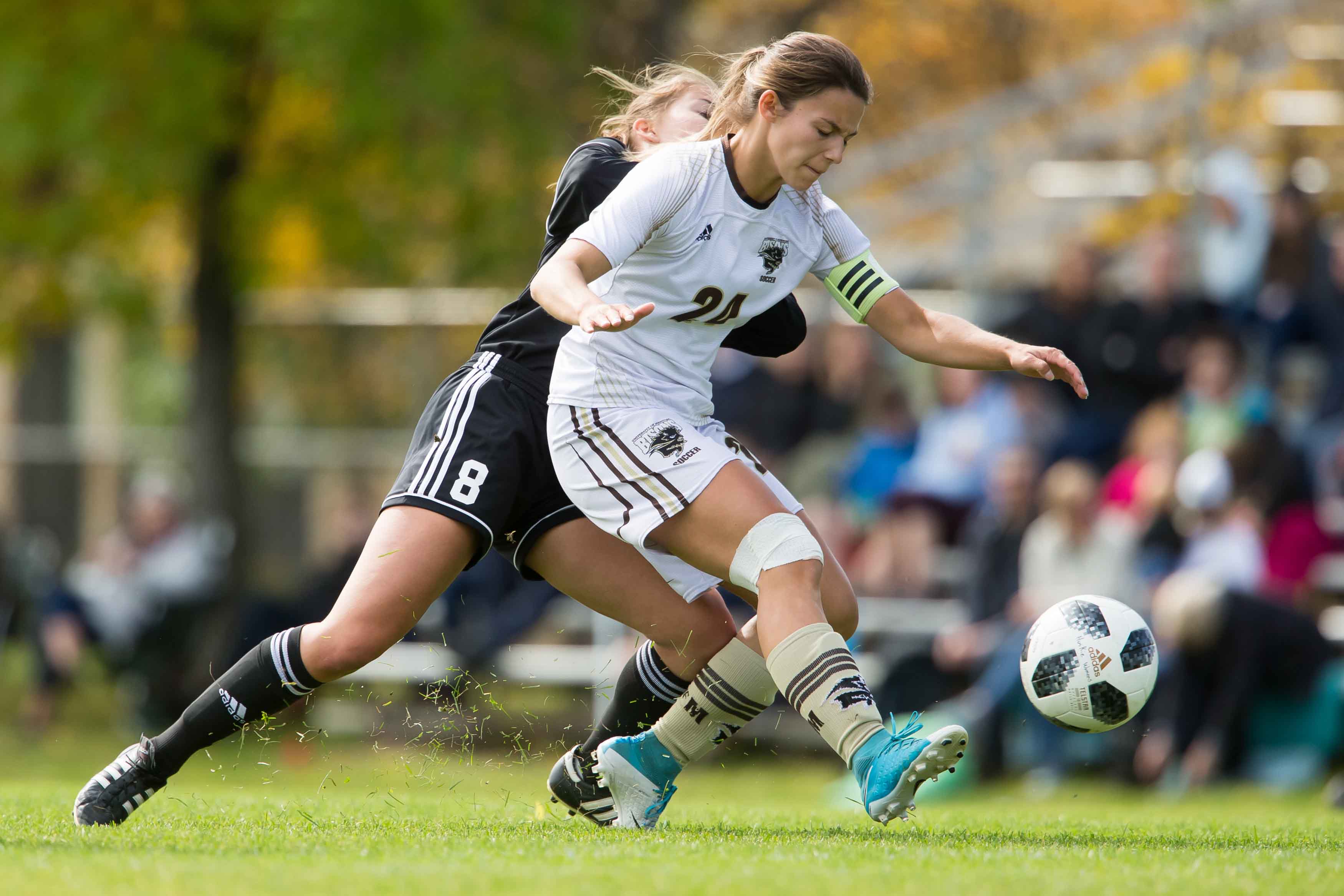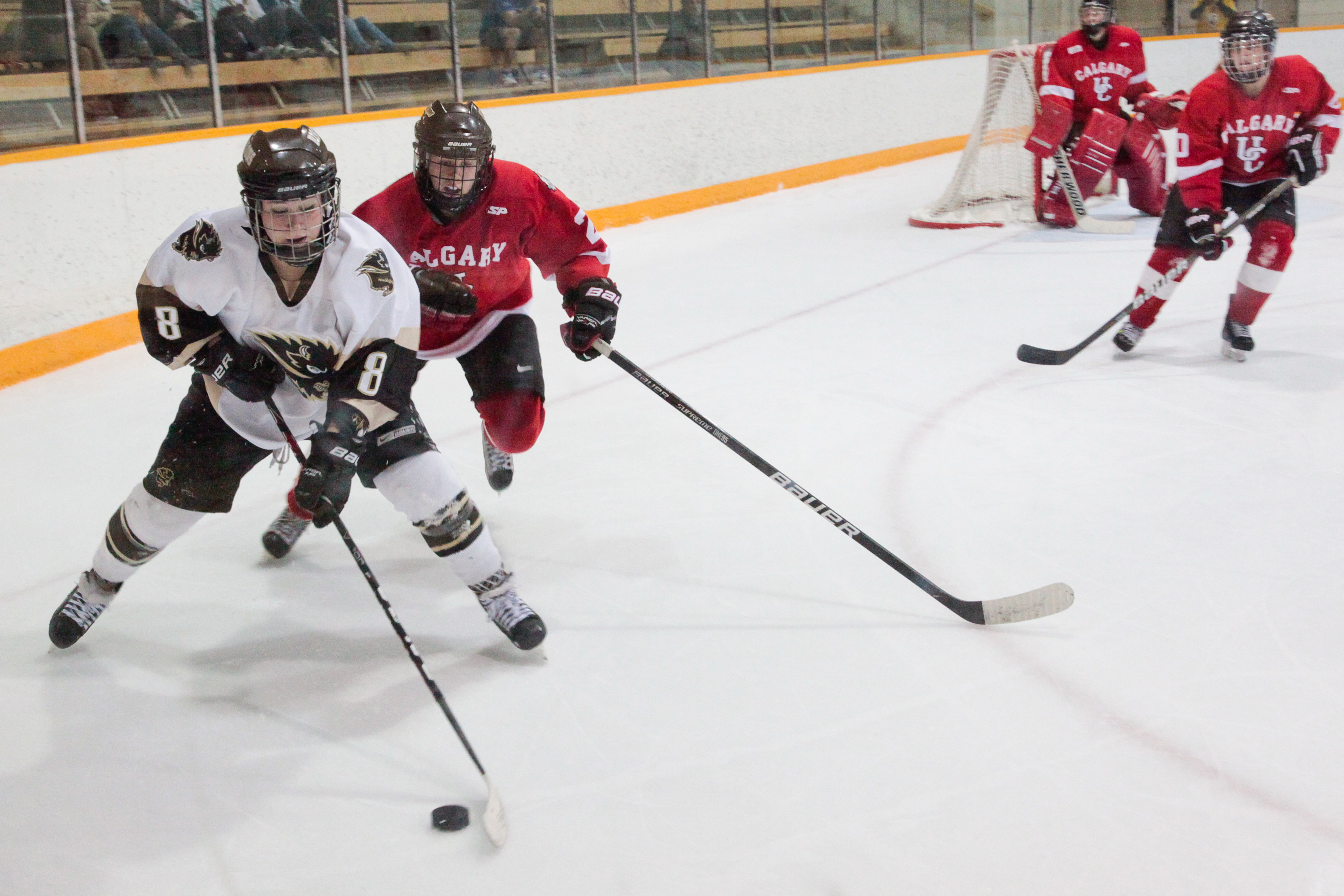It is the mark of good cheerleading to make gravity defying stunts appear effortless and enjoyable to a crowd of sports fans. Yet behind their grins and aura of ease, cheerleaders are athletes who train up to six times a week.
The Bison cheerleading team was established in 2003 and is co-coached by Nadia El-Gabalawy and Carrie Robson. El-Gabalawy became a cheerleader with the team when it was formed and was promoted to a coaching position three years later in 2006. Robson has been a cheerleading coach for the past 10 years and joined the Bisons in 2005. Together they train 32 athletes, eight of whom are men. They expect to have four more athletes join the team to make a full roster by next term.
There are specific elements that make a good cheerleader. El-Gabalawy indicates that prospective cheerleaders must have certain key characteristics such as a positive attitude, openness to suggestions and dedication. “We look for athletes with good athletic ability, a desire to learn and excellent time management skills. We want all of our athletes to be leaders in the community and positive role models, so attitude is very important to us.”
The athletic abilities of cheerleaders are the result of a lot of practice. There are three mandatory practices each week, which include stunting and tumbling skill practice, as well as conditioning and drills with a trainer. Cheerleaders then have three additional practices which are optional, but are attended by the majority of the team. El-Gabalawy adds that the content of the workout routines are also contingent on how close the team is to a competition. “Early in the season, they do skill development, conditioning, stunting drills and gymnastics. Mid-season they will work on sequences of stunts and tumbling passes as well as practice performing in multiple situations. Once competition season begins in December, they will focus on perfecting their routine, synchronizing everything and maxing out the difficulty.” To add to their busy training schedule, the cheerleading team performs at football games on Saturdays as well as local fundraising events.
Given the intricacy and precision inherent in cheerleading, there is a risk of injury. The element of danger faced by these athletes can only be minimized by extensive practice, knowledgeable coaching and trust in teammates. El-Gabalawy elaborates: “cheerleading injuries are not common on the Bison cheerleading team, however cheerleading can be a very dangerous sport. Injuries can be quite serious when they do occur so we are extremely careful about new skills or selecting which athlete will attempt which skill.” The most common injuries are minor bruises and sore muscles.
Cheerleaders must also face stereotypes that seem to come with the territory. In a sport that is often perceived as a female domain, people are often surprised to see men on the team. El-Gabalawy says many cheerleading teams have an equal number of males and females, and some even have more males than females. Beyond gender stereotypes, Nadia observes that another common misconception is that “cheerleading consists of ‘cheering’ only. We are a stunt and tumbling based cheerleading program. Each year, we have an open practice day where the athletes can bring friends who might be interested in the team and everyone is always shocked at how difficult and intricate cheerleading actually is.”
Defying gravity and stereotypes, the Bison cheerleading team consists of athletes who train hard to make their sport appear effortless.




